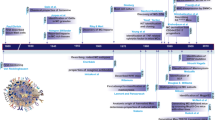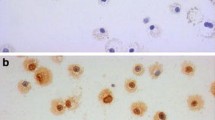Abstract:
Objective and design: In the present study we investigated the effect of SCF and/or IgE on histamine, TNF-α and chemokines released from bone marrow-derived mast cells (BMMC) as well as chemokine receptor expression.¶Material and methods: BMMC were derived from femoral bone marrow of CBA/J mice. The purity of BMMC was >98%percnt; after 3 weeks. BMMC (2.5 × 106 cells/well) were incubated in the presence or absence of either SCF, IgE plus DNP or a combination of SCF and IgE for 6 and 18 h. Cell-free supernatants were recovered to measure CC chemokines, TNF-α and histamine release utilizing ELISA assays. CC chemokine family receptors were detected by RT-PCR analysis, and confirmed using functional chemotactic assays.¶Results: Histamine levels were comparable between SCF and IgE stimulated cells, whereas TNF-α production was significantly greater after IgE compared to SCF stimulation. SCF and/or IgE-stimulated BMMC released CC chemokines, CCL22 (MDC), CCL17 (TARC) and CCL2 (MCP-1). Increased mRNA expression of CCR1, CCR2, CCR3, and CCR5 was detected in SCF and IgE-stimulated BMMCs. Functional chemotactic assays confirmed the expression data.¶Conclusion: SCF and IgE can up-regulate the expression of chemokines and chemokine receptors on mast cells. Thus, SCF may play a significant role in their activation and inflammation during allergic responses.¶
Similar content being viewed by others
Author information
Authors and Affiliations
Additional information
Received 31 August 2000; returned for revision 10 November 2000; accepted by L. G. Letts 17 November 2000
Rights and permissions
About this article
Cite this article
Oliveira, S., Lukacs, N. Stem cell factor and IgE-stimulated murine mast cells produce chemokines (CCL2, CCL17, CCL22) and express chemokine receptors. Inflamm. res. 50, 168–174 (2001). https://doi.org/10.1007/s000110050741
Issue Date:
DOI: https://doi.org/10.1007/s000110050741




